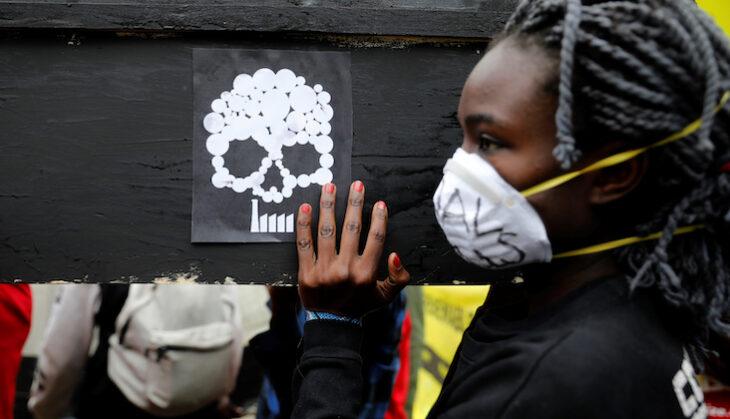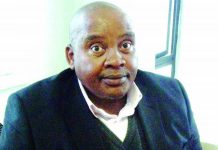Africa-Press – Lesotho. Africa is one of the regions that will carry an immense burden in the quest for net-zero emissions by 2050 as pushed at the COP26 climate summit. Despite the influx of enquiries, Africa’s share of green or ESG-themed transactions is less than 1%, Bank of America’s Natalie Mordi-Hillaert reveals.
In the past 18 months, there’s been increased interest in environment, social and governance (ESG)-themed financing by African borrowers, Mordi-Hillaert tells The Africa Report.
Mordi-Hillaert is privy to the numbers because she is “responsible for the bank’s ESG Capital Markets efforts in the EMEA [Europe, Middle East and Africa] region” and has “been at the bank for over 12 years.
” She says their role “in this space [green energy] has morphed over the years as the concept of ESG moves into mainstream”.
UN Assistant General Secretary Ibrahima Diong, who attended COP26 and was at the Intra-African Trade Fair (IATF) in Durban, highlighted the difficulties inherent in the transition to green power for Africa.
In particular, the urban-rural divide in energy access and the parlous state of government-owned power companies – and the nuanced nature of the conversation for the region.
There are frontrunners like South Africa […] issuing green bonds, social bonds and sustainability-linked bonds/loans. Elsewhere, Kenya, Egypt, Morocco and Nigeria have been active as well, but the majority of these have been centred on sovereign borrowings.
In this role, Mordi-Hillaert’s division is responsible for structuring and executing ESG-themed transactions, “mostly in the bond space, alongside other instruments like loans”.
She says the bank ensures that its “clients across corporate and investment banking are aware of its [ESG’s] importance to investors as they contemplate debt or equity capital market borrowings”.
Bank of America’s pioneering efforts include co-authoring the original Green Bond Principles, first published in 2013, and being instrumental in the European Investment Bank’s 2007 green bond, the first of its kind.
Through the International Capital Markets Association, the Green Bond Principles have been translated into different languages including Hausa, she notes.
The bank has also become synonymous with sustainability bonds, sustainability-linked bonds and transition bonds. These instruments and associated labels are designed to boost issuances and maintain market integrity, Mordi-Hillaert explains.
Leaders and laggers in ESG on the continent However, “excluding supra-nationals, Africa’s share of ESG-themed transactions is less than 1%. Even from the perspective of how much is raised in the debt capital markets, it’s still a tiny percentage”, she says.
For Mordi-Hillaert, this raises the question: “How do public sector entities help improve these metrics? Some have and continue to help. In addition to developing local markets, they provide guarantees, [and] give guidance to borrowers via multiple platforms and initiatives, such as the International Finance Corporation’s Sustainable Banking and Finance Network.
” She observes that development finance institutions have also been instrumental in improving Africa’s share of ESG-themed transactions.
“Honing in on the sustainable finance market, there have been ample ESG-themed bond issuances from supra-nationals across different African currencies to help finance key climate-environmental and social projects and develop local debt markets.
We would encourage all borrowers raising funds in the capital markets seriously to consider issuing in this [green] space to enhance their sustainability profiles.
In “the last 18 months, there’s been an increase in dialogue on the ESG-themed financing by African borrowers, which is reassuring”, she says. “There are frontrunners like South Africa with corporates, banks and cities all issuing green bonds, social bonds and sustainability-linked bonds/loans.
Elsewhere, Kenya, Egypt, Morocco and Nigeria have been active as well, but the majority of these have been centred on sovereign borrowings. ” There are ample benefits issued in the sustainable finance market.
Mordi-Hillaert cites enhanced visibility, a diversified investor base, improvement in stakeholder relationships and a better understanding of ESG risks and opportunities.
“We would encourage all borrowers raising funds in the capital markets seriously to consider issuing in this space to enhance their sustainability profiles.
” To grow or to go green
As borrowers from the continent mull over the fast-changing landscape in capital markets, the region is faced with probing questions about its growth trajectory in the context of COP26 goals and objectives.
One of its greatest dilemmas is which economic growth path to pursue to alleviate the plight of millions living in poverty. Mordi-Hillaert states that it is fundamental to understand that economic growth and social impact go hand in hand.
“It was clear from COP26 discussions that the question is not so much who should pay for the current unsustainable economic system, but more about when, and if, what is transferred is enough to compensate regions for the burden of adjustment given the impact would be greatest in these areas in the long term.
” How integrated are social issues linked to the transition to a low-to-zero carbon economy in investors’ decision-making process?
In terms of private capital, monitoring the progress in Europe and developed markets will be key. Europe, in particular, is ahead in climate-related ambitions.
“These ambitions, including becoming a climate-neutral continent by 2050, are supported by market-defining regulatory developments.
As these changes materialise, there will be trickle-down effects for the rest of the world as investors increase capital allocation to ESG-compliant countries and companies with similar green policies,” says Mordi-Hillaert.
To help ensure private flows to African businesses, it is imperative that countries on the continent formulate a strategy and taxonomy of acceptable green activities and projects that put into context a state’s unique situation.
“Europe’s discussion on energy, for example, is centred on energy transition; Africa’s is more of an energy access conversation.
The communique [on strategy and taxonomy] should also provide clarity on social challenges that go beyond job losses,” she says. “With a Just Transition a necessity, a number of questions come to mind.
How integrated are social issues linked to the transition to a low-to-zero carbon economy in investors’ decision-making process? Do investors have sufficient data from African companies and countries borrowing in the capital markets to make an informed decision on the topic?” she says.
Setback for Africa Diong’s assessment somewhat differs. The other side of the coin is the real economy, where the on-the-ground perspective is crystallised.
Far from the highly evolving and integrated grids of Europe and other developed markets, energy access in Africa remains fragmented. It is a widely accepted notion that power is a catalyst for development.
Having recently come back from COP26, Diong says: “I think one of the biggest setbacks for many Africans … [who attended] despite all the positive things I said earlier, is the question about fossil fuels in terms of Africans who have access to these natural resources and wanted to use that to fix the energy problem… They felt like what has helped the West to develop itself is now being used against Africans, so therefore it’s not fair.
COP notwithstanding, Diong’s view is that Africans realised long ago that “you cannot develop a country without making sure access to energy is affordable and reliable. South Africa is a great example [of that], but also other parts of Africa as well”.
With this in mind, Diong says a key question for the continent is: “What exactly [can] we do to diversify our energy sources and make sure, in addition to fossil fuel – for those who have it – [and] others who can use renewables and other sources of energy, development is done in a way that we can diversify our pool of energy sources?”
“That is the reason why institutions like the African Development Bank, Afreximbank are availing resources to develop those kinds of projects.
It’s part of the solution as opposed to waiting for the West and the international community through COP26 to tell us what to do in the energy sector,” Diong says in response to questions posed to him by The Africa Report at the IATF.
A holistic view Another major issue is recognising the imbalance between rural and urban areas in Africa. “The majority of Africans in rural areas may not have access to the grid.
We need to think about other ways – such renewables, solar and so on – and make sure we can develop energy sources off-grid … [to] feed the demand, particularly in the rural areas in Africa,” says the assistant general secretary.
As far as Diong is concerned, that conversation can take place with or without COP26. In fact, “it is taking place with some of the development banks on the continent”, he says.
[…] we need to make sure that as we are fixing the generation and transport [of energy], we also make sure our energy companies are properly run in terms of governance, efficiency…
Seldom spoken about components of the energy conversation, beyond producing power, are distribution and transportation, he says. “There is no point in producing electricity and [then] not being able to get it to where it is needed in Africa.
“I believe in addition to producing electricity, we also need to think about investment in the transport, in the distribution, so we can [get] energy to where it’s needed in Africa,” he says.
Furthermore, “it’s also important to recognise most of our energy companies – I am not going to say South Africa alone, but other companies in Africa – [have] a lot of issues [that need] to be fixed. Some of them could be considered bankrupt”, says Diong.
“Therefore, we need to make sure that as we are fixing the generation and transport [of energy], we also make sure our energy companies are properly run in terms of governance, efficiency, so that the three combined – generation, transport and management – will be part of the solution in our energy transition,” he says.
For More News And Analysis About Lesotho Follow Africa-Press






